Everything You Need to Know About Selecting the Right Wheelchair Tires
December 1, 2021
Kirk Williams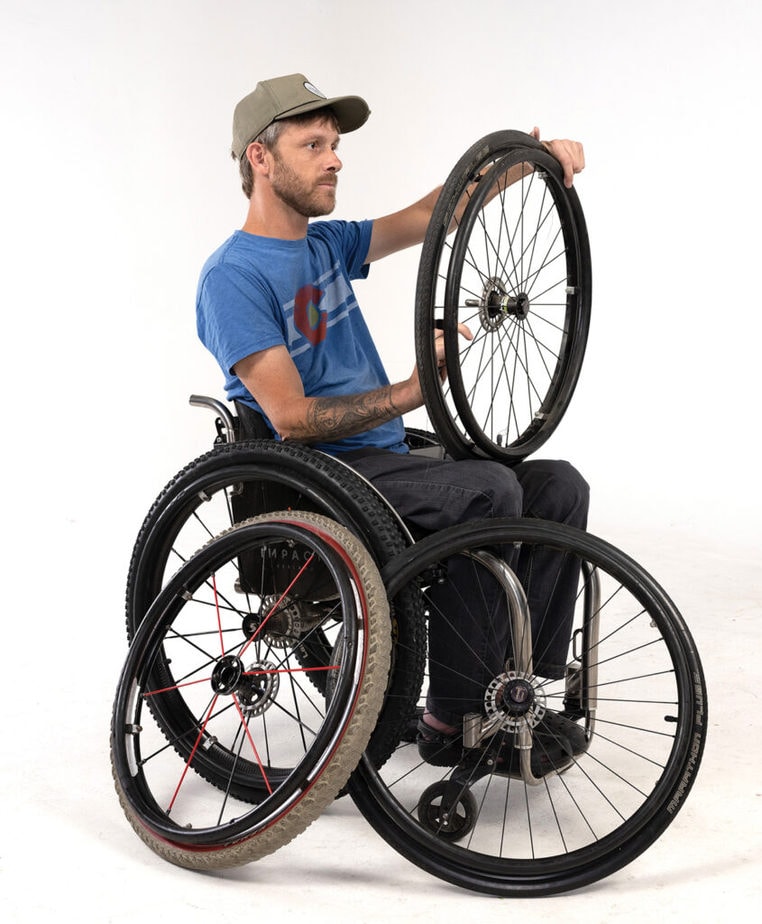
Kirk Williams is a photographer, filmmaker, athlete, travel junkie, entrepreneur and public speaker. In the 12 years since he sustained a C6-7 SCI, he has ventured all over North and South America in his custom-built Campervan. He is the founder of Impact Overland, a travel blog that is raising funds to help supply wheelchairs to those in need. Follow him and see his work on Instagram @kirkscamera and
@impact.overland.
I am often asked why I use knobby tires on my wheelchair. Since most manual chair users roll on a skinnier tire, my knobbies stand out. It’s a style thing, sure, but they’re not just for style points. “I spend a lot of time off the pavement, and the knobbies are easier to use on that type of terrain,” I usually answer.
Wheelchair users also sometimes ask where they can get a set, but that question requires a much more involved answer. Wheel size, chair geometry and rolling resistance are just a few things to consider when selecting tires, and the simple act of putting wider tires on your chair can have a big impact on its fit and performance.
My attempts to fully answer that question have become something bigger — a guide to everything you didn’t know you needed to know about selecting the right wheelchair tires for your life. I hope that after reading this, you will be able to better understand the nuances of the various options for wheelchair tires and make an informed decision about which setup best suits your needs.
Rim-Tire Size Hack for Summer/Winter Street/Off-Road
My activities tend to waver from urban wheeling to off-road, and living in California I frequently go from the temperate foothills to the snowy Sierra mountains. In my quest for maximum efficiency, I strive to always have the right tires on my chair.
I use 1-inch high-pressure for urban wheeling and 2.1-inch knobby tires for off-road or snowy conditions. The problem is, I use the same rim for both, and the diameter of a 2.1-inch knobby tire is significantly larger than a 1-inch tire. This means one set of tires or the other causes the back of my chair to be too high or too low, which throws off both seating position and the front caster angle.
However, there is a hack to work around this.
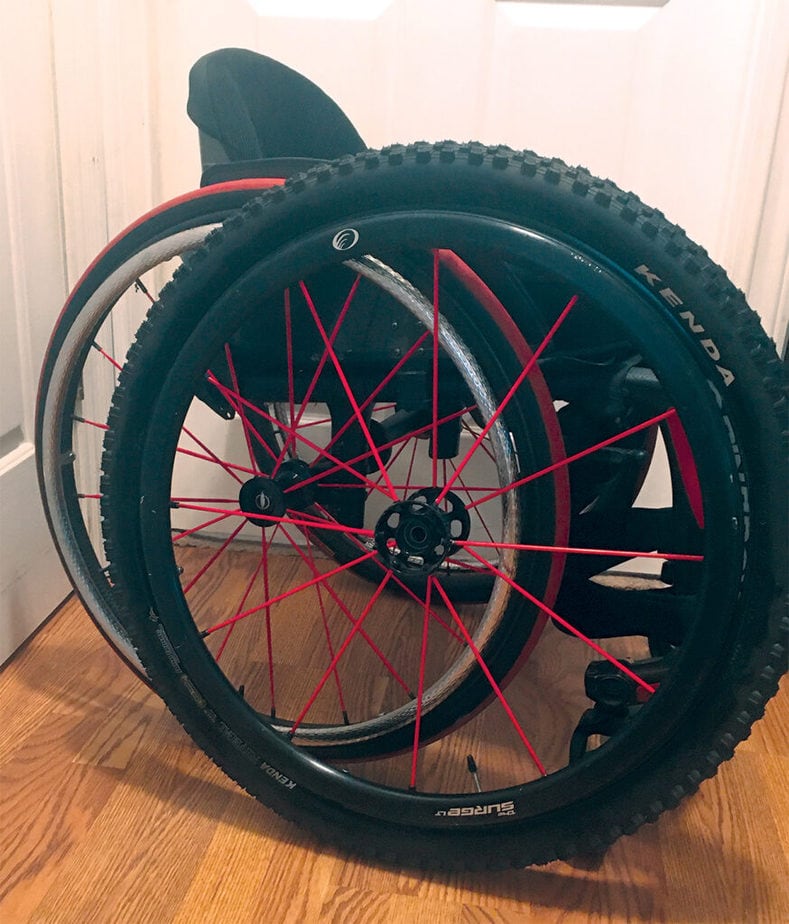
A 2.1-inch knobby tire mounted on a 24-inch 540 rim has a nearly identical diameter to a 1-inch tire mounted on a 25-inch 559 rim. Hence, I set my chair up for my 25-inch 559 rims and keep my 24-inch rims with knobby tires in the back seat of my car for easy switching to match the conditions of the day.
This same hack should work on a 25-inch 559 rim and 2.1-inch mountain bike tire matching up with a 26-inch 590 rim and 1-inch tire. I’m currently using 2.4-inch knobby tires I got at a local bike shop, and they work fine.
The one size I’m not sure this hack works on is 24-inch 540 rims with a 1-inch tire as I haven’t had a chance to compare it with the diameter of a 2.1-inch mountain bike tire on the next smaller rim, 22-inch 501. If any readers have, please let me know at info@newmobility.com.
— Bob Vogel
The Maddening World of Tire Measurements
Let me start by saying that tire size is confusing. Until recently, there were no agreed-upon standards on how to measure a tire, so we were left with a mishmash of measurement systems from different countries. Here in the U.S., we follow the imperial system, which uses inches. What is flawed with this system is that it measures the outside diameter of a tire, and the outside diameter changes based on the width of the inflated tire. That’s one of the reasons we’ve reached a nothing-makes-sense world where a 25-inch wheelchair rim fits a 26-inch mountain bike tire.
Fortunately, tire and wheel manufacturers across the world have finally gotten on the same page and use a two-number system that does a much better job of keeping your head from exploding. Both numbers are in millimeters and the first refers to the tire width — the bigger the number, the wider the tire. The second refers to the inner diameter of the tire. In this system, a 1-inch wide tire that fits a 25-inch wheelchair rim is designated a 23-559, while a 2-inch-wide tire that fits the same rim would be labeled a 54-559 (see below for a list of conversions for common wheelchair sizes).
Imperial Vs. Metric Common Wheel Sizes
Common wheel size conversions are as follows:
22-inch = 501
24-inch = 540
25-inch = 559
26-inch = 590
The good thing about this system is that you know the tire will fit as long as the second number matches your wheel size. But. That doesn’t mean it’s always a simple swap. Remember how I said different widths change the outer diameter of a tire? That’s important for wheelchair seating.
Wide = Tall
Simply put, a wider tire is a taller tire. These days, most manual wheelchair frames are measured and built to fit narrow tires, so if you put a wider, mountain-bike-style tire on your chair, it will raise your rear seat height.
Take a look at the side-by-side photos below where I show the same 559-rim-size wheels with both a Schwalbe Marathon Plus (25-559) and a Kenda Small Block Eight (54-559). Do you see how much taller the Marathon is on the same size rim? If you look closely, you’ll notice the center of gravity changes along with the angle that the casters meet the ground. By putting on a wider tire, I have raised my seat almost an inch — a huge change when it comes to chair setup.
Many people opt for two sets of wheels: one setup for indoors and pavement, the other for off-road wheeling. That way, you can pop the off-road wheels on if you’re going camping, on a hike or to your kid’s soccer game, without having to deal with the width and rolling resistance of off-road tires when you don’t need them (see Rim-Tire Size Hack above for more info).
It is common to use a size smaller rim with a knobby off-road tire to match the original-sized skinny tire/wheel diameter. Note that when you put on wider tires, you may have to space them farther out so they don’t rub on your side guards or clothes. Similarly, you may need to make minor brake adjustments depending on the tire/wheel combo.
For example, if you’re currently using a 559 (25-inch) wheel with a skinny tire and you want to switch to the Kobra, you need to buy a 540 (24-inch) wheel to put the Kobra on to keep the chair angles close to the same.
Finding the Right Tire for You
Clearly, there are a lot of factors to consider when selecting tires and every decision comes with trade-offs, but taking the time to consider your tire width, weight and rolling resistance can have a huge impact on your ability to navigate your environment.
Check out these four common wheelchair tires — all of which I have used — and the pros and cons of each. There are many other options out there, but hopefully this comparison will help you decide which style works best for you and your lifestyle.
Schwalbe Marathon Plus
Intended for city streets, asphalt and sidewalks, this tire offers decent flat protection.
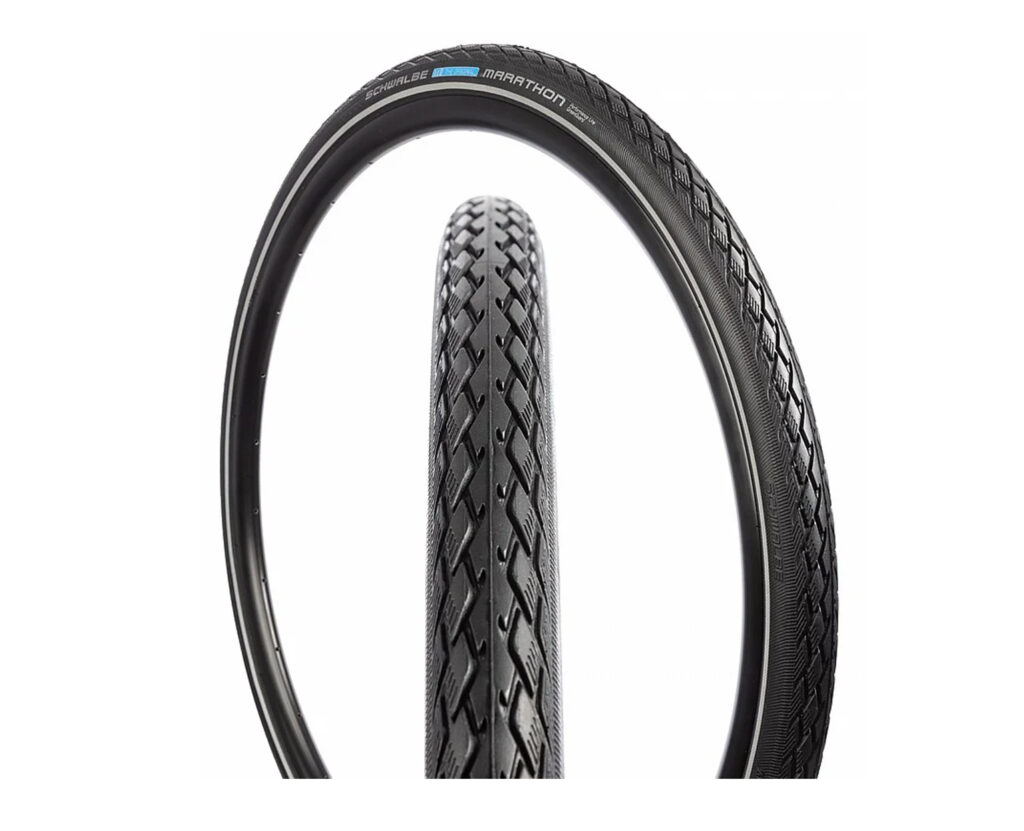
Pros:
• Low rolling resistance
on hard surfaces
• Flat protection
• Lightweight
• Narrow chair
Cons:
• Sink into soft ground
• Slip in snow
• Harsh ride quality
Kenda Nevegal
Recommended for off-road conditions where traction is critical, including snow, mud and sand.
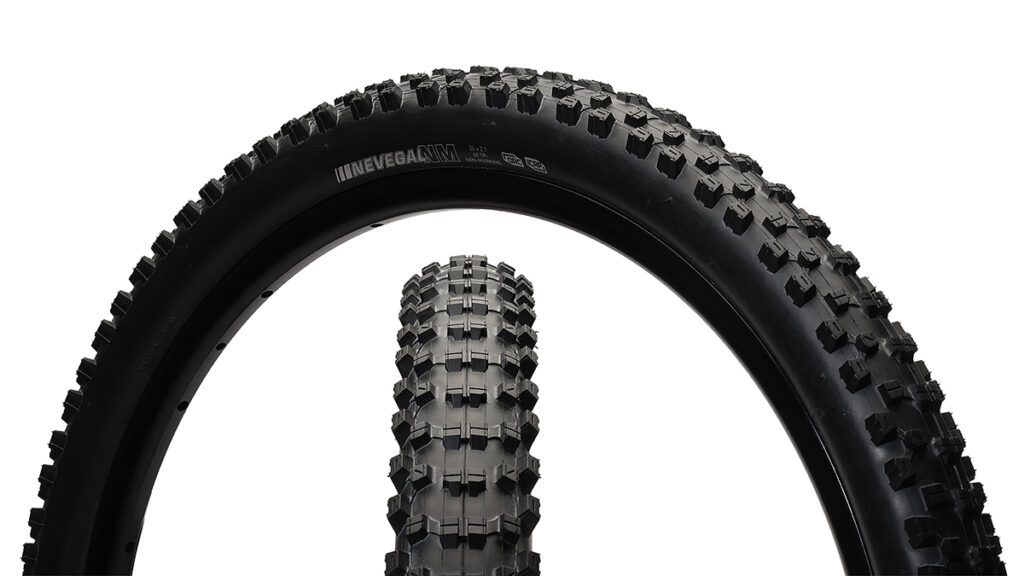
Pros:
• Superior off-road traction
• Float over soft ground
• Rugged look
Cons:
• Higher rolling resistance
• Heavy weight
• Knobs can catch on clothing
• Wide chair
Kenda Small Block Eight
Recommended for on- and off-road use where you want off road capabilities without sacrificing a lightweight feel.
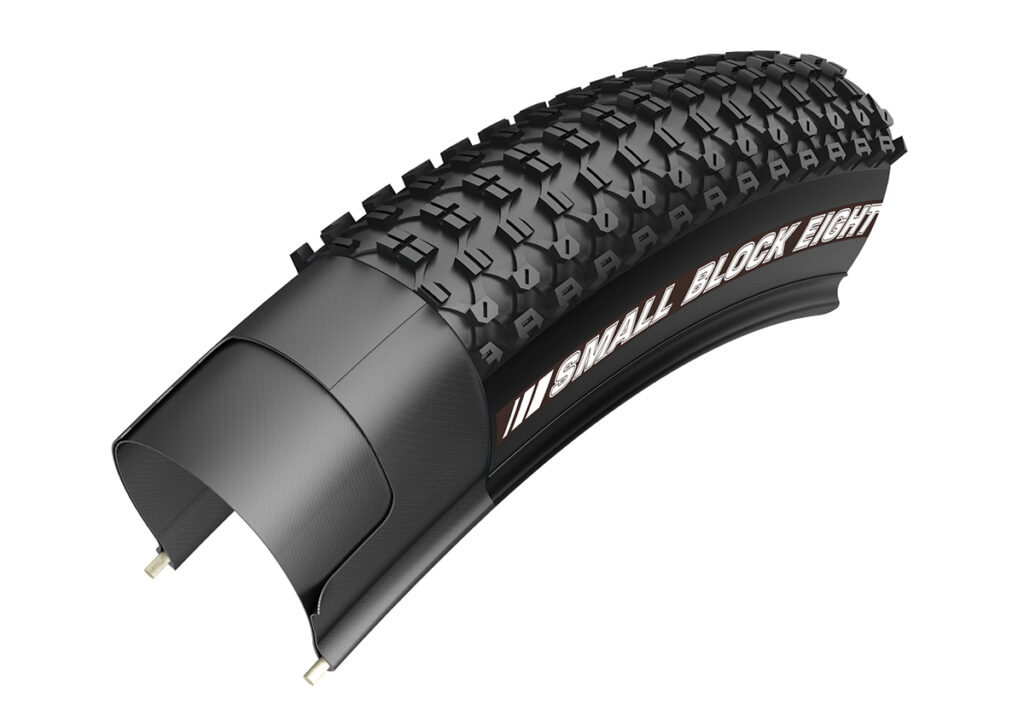
Pros
• Low rolling-resistance for a knobby
• Light weight for a wide tire
• Black sidewalls
Cons
• Mark floor and hands with black
• Only available in select sizes
• Not thorn resistant
• Wide
Kenda Kobra
Recommended for a mix of street and off-road pushing, including gravel, grass and dirt.
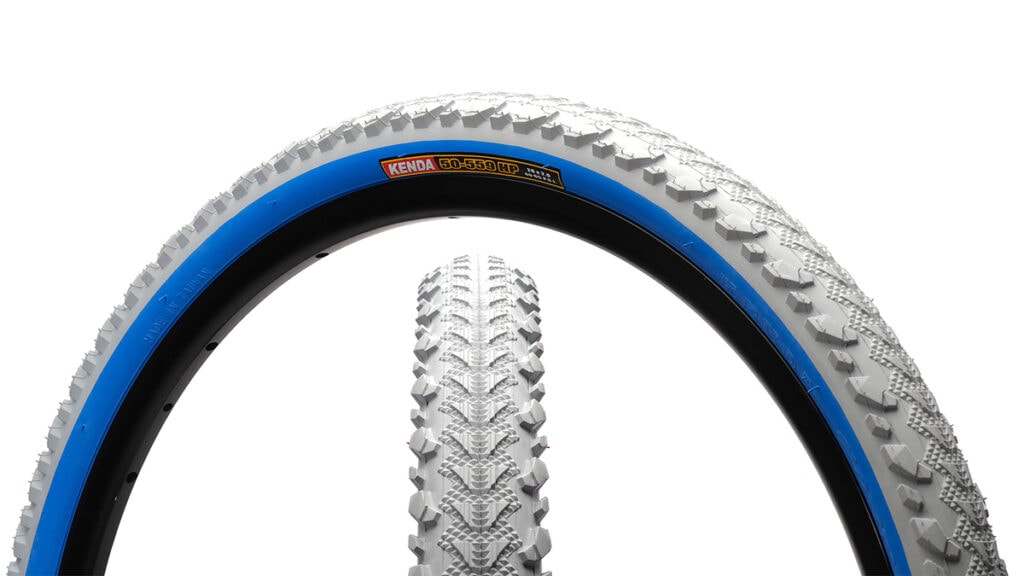
Pros
• Low rolling resistance for a wide tire
• Fast on road and still functional off-road
• High-pressure
Cons:
• Heavier weight
• Gray color and colored sidewalls
• Wide chair
Support New MobilityWait! Before you wander off to other parts of the internet, please consider supporting New Mobility. For more than three decades, New Mobility has published groundbreaking content for active wheelchair users. We share practical advice from wheelchair users across the country, review life-changing technology and demand equity in healthcare, travel and all facets of life. But none of this is cheap, easy or profitable. Your support helps us give wheelchair users the resources to build a fulfilling life. |


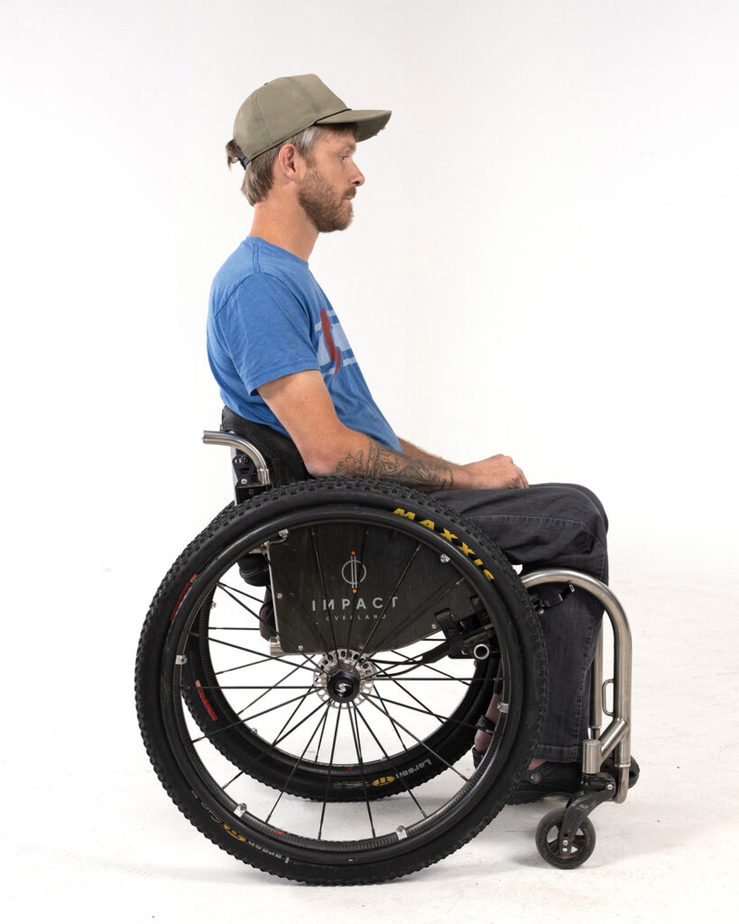
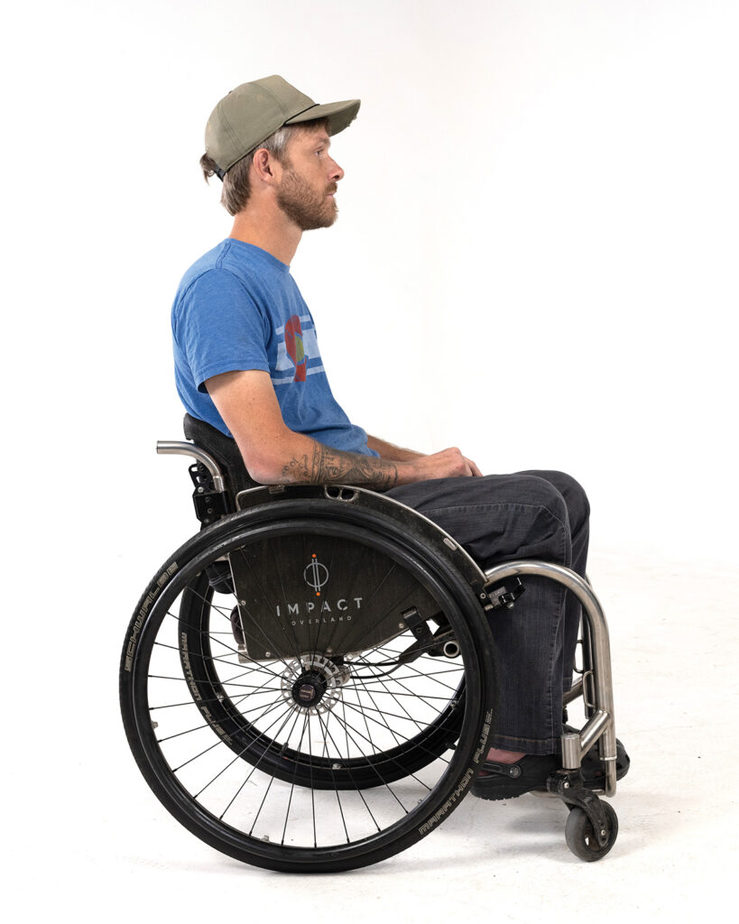
What part does insurance play on the selection of tires? (I am asking in California.)
Usually nothing (unless ordering with chair or wheels). Sometimes you can get them to cover tires, but not really worth the time and hassle since tires are so inexpensive. Best to submit for reimbursement if it matters. Your insurance provider and plans are what decides that.
Pneumatic tires go flat.
Can you recommend solid tires?
Question? I just purchased a 24″ solid tire for the replacement of a tire that was on the rim. the tire seems a little loose. Did I get the wrong tire or is it just the way it is.
I replaced the tire 24×1 solid with the same size tire